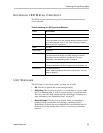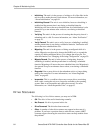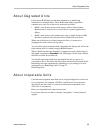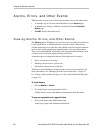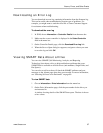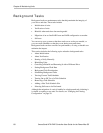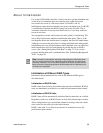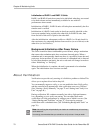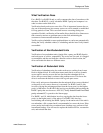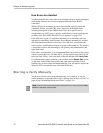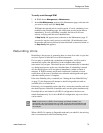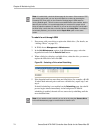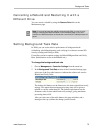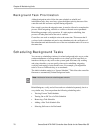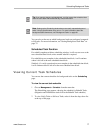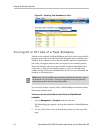
Background Tasks
www.3ware.com 71
What Verification Does
For a RAID 1 or RAID 10 unit, a verify compares the data of one mirror with
the other. For RAID 5, a verify calculates RAID 5 parity and compares it to
what is written on the disk drive.
Verification checks each sector on a drive. This is important, because day-to-
day use of the media may leave many sectors on a drive unused or unchecked
for long periods of time. This can result in errors occurring during user
operation. Periodic verification of the media allows the disk drive firmware to
take corrective actions on problem areas on the disk, minimizing the
occurrence of uncorrectable read and write errors.
Verifies can be scheduled to run at preferred times or can be run automatically
during the Verify schedule window, if scheduling and the Auto Verify feature
are enabled.
Verification of Non-Redundant Units
Verification of non-redundant units (single disks, spares, and RAID 0 units)
read each sector of a drive, sequentially. If a sector can’t be read, it is flagged
as unreadable, and the next time the controller writes to that location, the
drive reallocates the data to a different sector.
Verification of Redundant Units
Verification of redundant units also reads each sector, working from lowest
block to highest block. If verification cannot read data in a sector, dynamic
sector repair is used to recover the lost data from the redundant drive or
drives; this recovered data is written to the problem sector. This forces the
drive to reallocate the defective sector with a good spare sector.
If the verify unit process determines that the mirrored drives are not identical
or the parity is not correct, the error is corrected. For RAID 1 and 10, this
involves copying the miscompared data from the lower port(s) to the higher
port(s) of the mirror. For RAID 5 this involves recalculating and rewriting the
RAID 5 parity that was incorrect. AEN 36 (
“Verify detected and fixed data/
parity mismatch”
) is posted to the Alarms page.
For RAID 1 and 10, initialization involves copying the data from the lower
port(s) to the higher port(s) of the mirror. For RAID 5 this involves
recalculating and rewriting the RAID 5 parity for the entire unit. If the unit is
not redundant, a file-system check is recommended to correct the issue. If the
errors persist and cannot be overwritten from a backup copy, perform a final
incremental backup. You will need to replace the defective drive, recreate the
unit, and reinstall the data.



